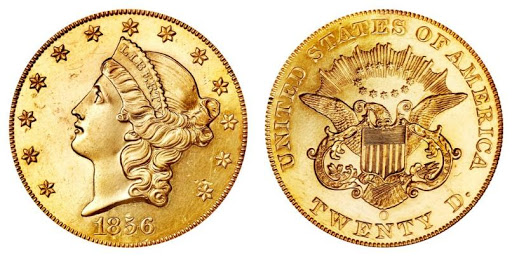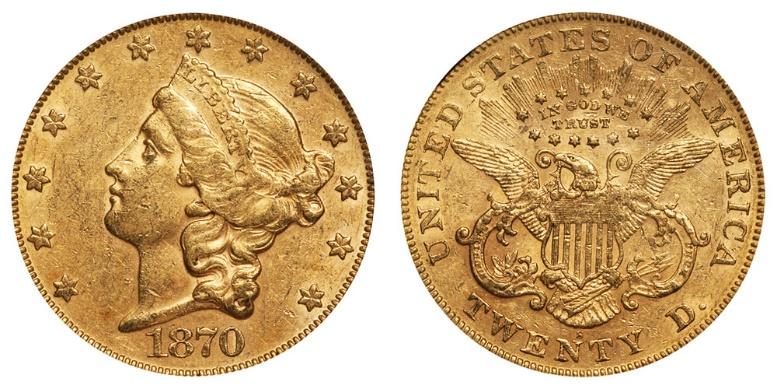No.4 Double Eagle and Liberty Head Double Eagle
In 1795, two years after the opening of the first U.S. Mint (Philadelphia), they produced an American coin named eagle. It had a face value of $10.
Following the discovery of gold in California in the 1840s, gold-seekers brought a significant amount of gold eastward. In 1850, the United States took advantage of this opportunity to strike the first Double Eagle coin designed by the American master engraver, James B. Longacre. Its name comes from its face value, which is equal to $20, so 2 eagles. They created it to simplify the transfer of large amounts of money between financial institutions and between nations.
Liberty Head Double Eagle
From 1850 to 1907, the Double Eagle was called “Liberty Head”. Indeed, its obverse featured Lady Liberty’s face, facing left, with her hair pulled back. She wears a crown with the inscription “Liberty” and thirteen stars representing the States of origin, as well as the year of issue surround her.

The reverse is adorned with a heraldic eagle holding a double ribbon on which is inscribed “E Pluribus Unum”. It means “out of many, one”. The drawing is a variation of the Great Seal of the United States; the eagle protects a shield that represents the nation and holds an olive branch and arrows. Above the bird, we can once again see thirteen stars arranged in a halo.

In 1866, the inscription “In God We Trust” appeared the circle of stars on the reverse. This addition follows the 1861 decision that American coins should be an expression of faith in God. During this modification, several changes to the shield, olive branch and eagle were also made.

In 1877 there was further modifications on the coin. The most important one was on the back of the coin where the inscription “Twenty D.” became ” Twenty Dollars “. The other modifications are much lighter. For example on the obverse the neck of Liberty has a sharper angle to leave more space for the date.
Previous article: Gold Guilder (3/15)
Next article: Saint-Gaudens Double Eagle (5/15)

